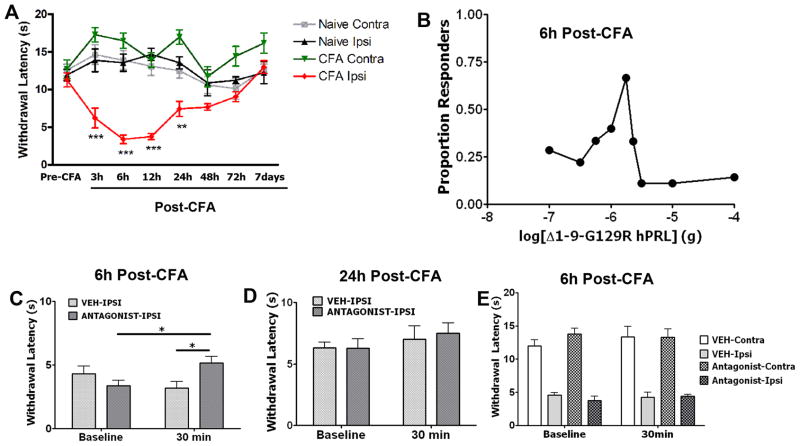Figure 5. Effects of the PRL-R antagonist Δ1-9-G129R-hPRL on CFA-induced thermal hyperalgesia in OVX-E female rats.
All experiments presented in this figure were conducted with OVX-E female rats. (A) Time course of CFA-induced thermal hyperalgesia. CFA was injected into Ipsi hindpaws. Naive animals were injected with vehicle. Two-way ANOVA shows statistical differences between pre-CFA recordings and each of 3, 6, 12 and 24h time points (F=14.15; df=6). *** (p <0.001 for 3, 6 and 12h , ** p=0.004 for 24 h time point, n=6). (B) Qualitative dose-response relationship for Δ1-9-G129R-hPRL. Proportion of responders was calculated based on 25% MPE, indicating peak effects of the antagonist with a 1.78μg dose. (C) Withdrawal latency (sec) to radiant heat stimulus 6h following intraplantar administration of CFA. Following testing at 6h post-CFA (marked as baseline), animals were injected with veh or 1.78μg of Δ1-9-G129R-hPRL and withdrawal latencies were assessed 30 min later. Two-way ANOVA results are shown for groups with significant differences by horizontal bars connecting compared groups (F=9.97; df=1). Between groups * (p =0.03; t=2.693; n=6) and within group (p =0.02; t=5.152; n=6). (D) Withdrawal latency to radiant heat stimulus 24h following intraplantar administration of CFA. Following testing at 24h post-CFA (baseline), animals were injected with veh or 1.78μg of Δ1-9-G129R-hPRL and withdrawal latencies were assessed 30 min later. Two-way ANOVA was performed, comparing all groups. n=6–8 (E) Following testing at 6h post-CFA (baseline), vehicle or the PRL-R antagonist were administrated s.c. to the backs of the animals. The withdrawal latencies were measured from Ipsi and Contra hindpaws at 30 min post-antagonist. Two-way ANOVA was performed, comparing all groups. n=6–7.

